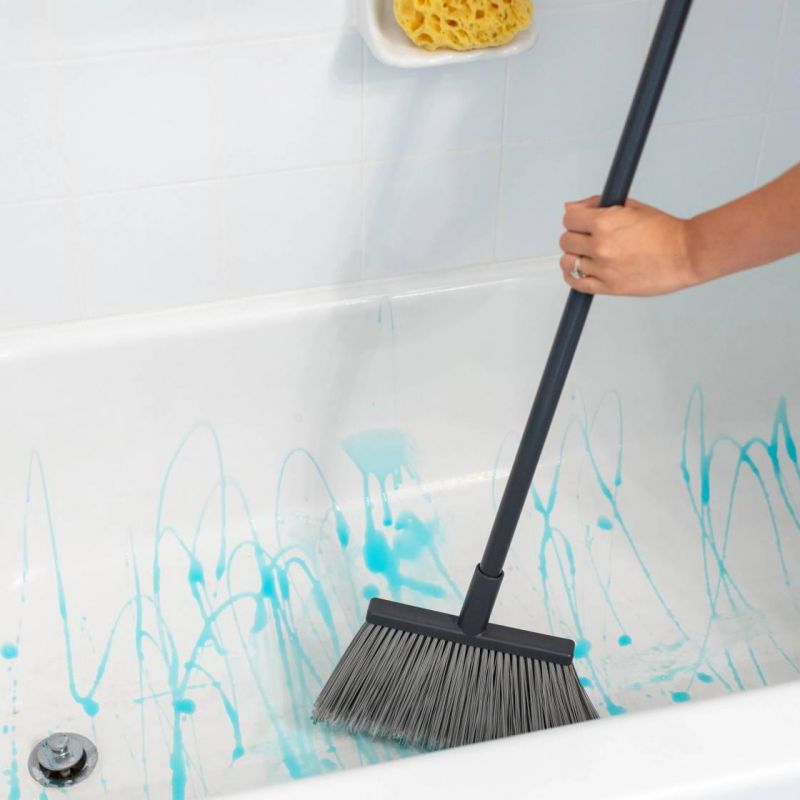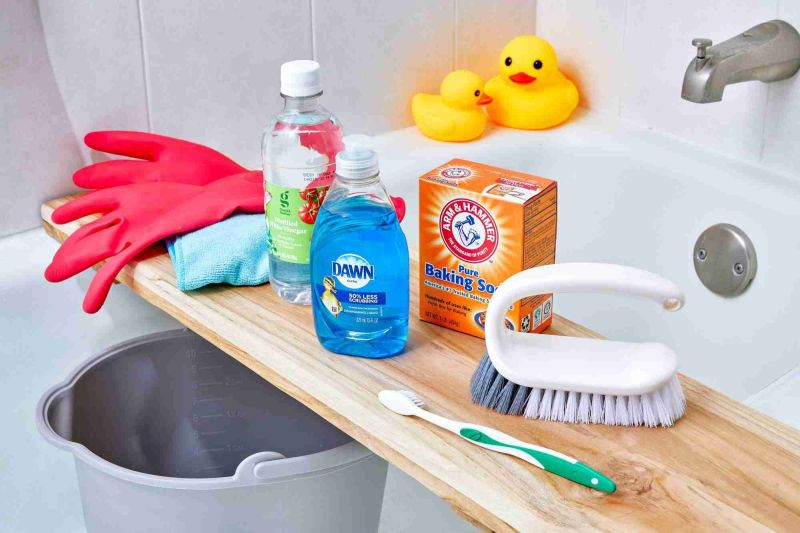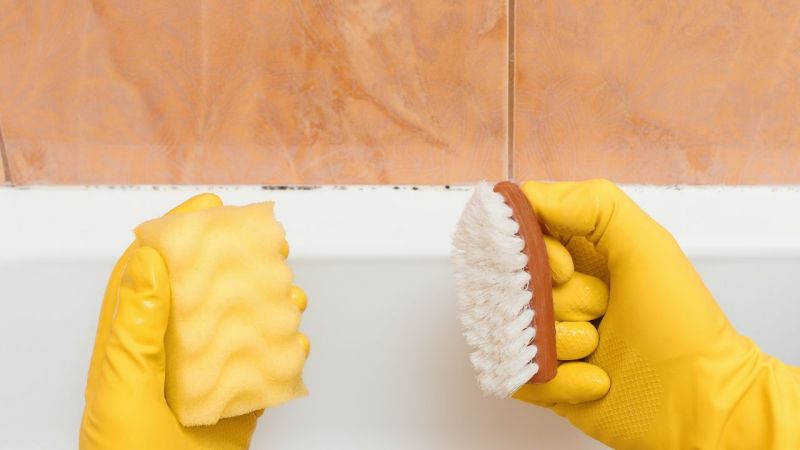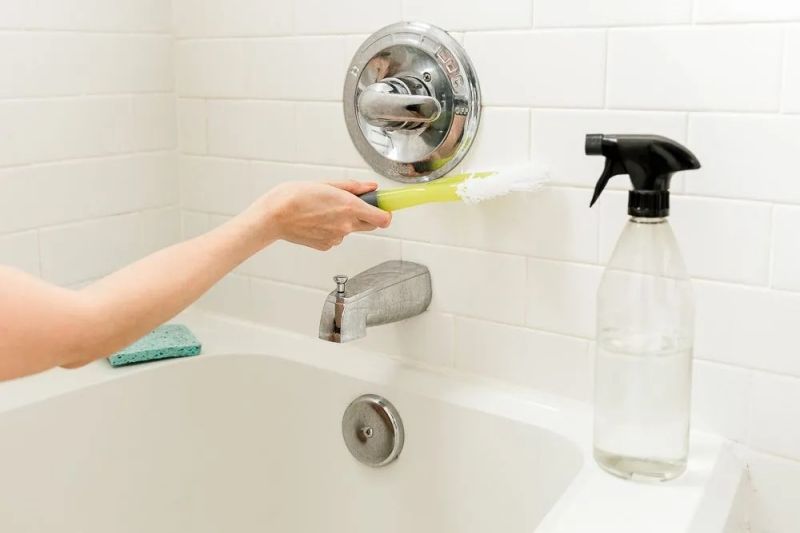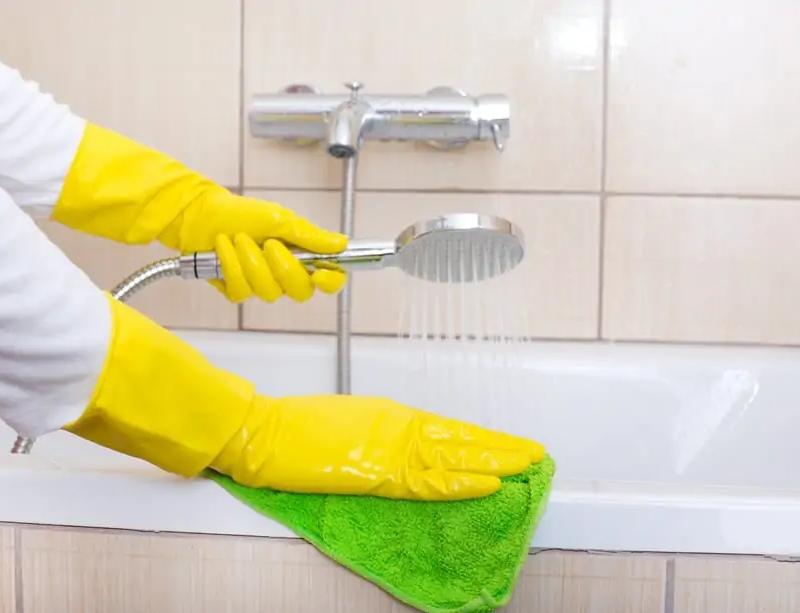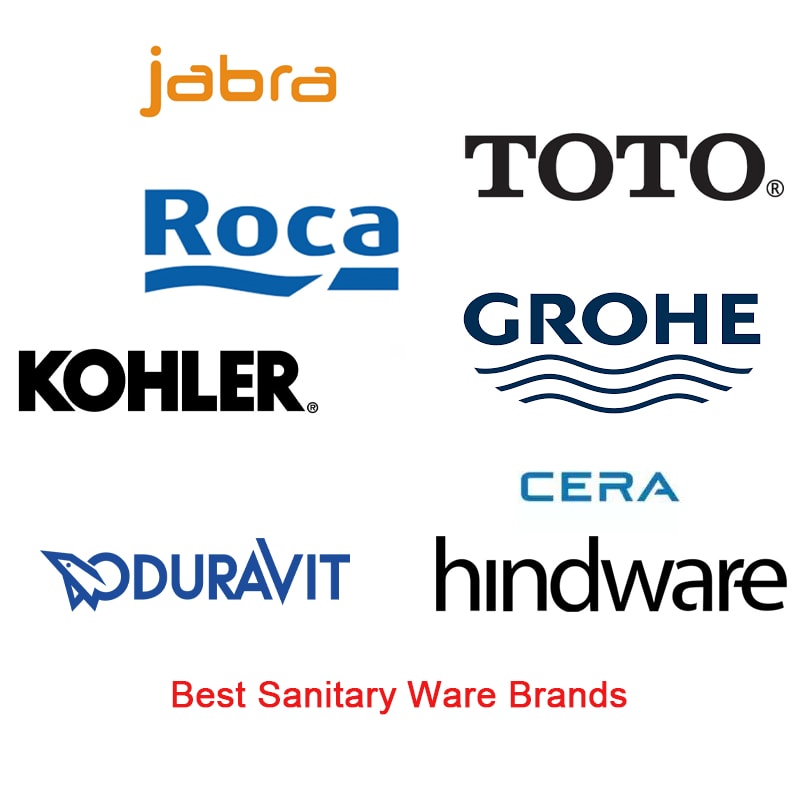 English
English
Jabra Sanitary is a sanitaryware supplier offering toilets, sinks, faucets, bathtubs, etc., at competitive prices. If you're a distributor, wholesaler, or project contractor, get a quote today!
 $23.9 Limited-time Offer
$23.9 Limited-time Offer Consignment Policy
Consignment Policy 20 Years of Experience
20 Years of Experience
Keeping your bathtub clean is essential not only for hygiene but also for the longevity of the tub itself. Bathtubs can quickly accumulate soap scum, stains, and even mold or mildew, which can be difficult to remove if not addressed promptly.
Whether you're dealing with stubborn stains or just want to maintain a pristine tub, choosing the right cleaning method is crucial. In this guide, we will explore the best product to clean a bathtub, how to remove stains from bathtub, and tips to keep it clean longer. If you're wondering how to clean your bathtub effectively, we've got you covered with solutions for all bathtub types.
Table of Contents
Best Products to Clean a Bathtub
How to Choose the Best Way to Clean a Bathtub
Learn About Types of Bathtub Stains
Check What Your Bathtub is Made Of
Bathtub Cleaning Basics
Steps to Clean and Unclog a Bathtub Drain
How to Clean Mold or Mildew from Your Bathtub
Tips for Cleaning Your Bathtub
Tips to Maintain a Clean Bathtub
Frequently Asked Questions
Final Thoughts
Best Products to Clean a Bathtub
1 Commercial Cleaners
Commercial bathtub cleaners are widely available and are often designed to tackle tough stains and soap scum with minimal effort. Popular brands like Scrubbing Bubbles, Lysol, and Kaboom offer products that are easy to use and highly effective for cleaning a bathtub.
Pros:
- Fast and powerful at removing tough stains and buildup.
- Convenient and easy to find in stores.
- Often come with specific instructions tailored to how to clean a bathroom tub efficiently.
Cons:
Many contain harsh chemicals that can be harmful if inhaled or if they come into contact with skin.
May cause damage to certain bathtub materials like acrylic or fiberglass if used too frequently.
Environmental concerns due to chemical runoff.
2 Homemade Methods
Homemade cleaning solutions are a popular alternative to commercial cleaners, especially for those looking to avoid harsh chemicals. Common ingredients include baking soda, vinegar, lemon juice, and dish soap, which can be combined to create effective cleaning solutions. Knowing how to clean a bathtub with vinegar and baking soda is a great way to maintain cleanliness using everyday household items.
Pros:
- Cost-effective and environmentally friendly.
- Safe to use around children and pets.
- Ingredients are usually readily available in most households, perfect for regular bathtub cleaning.
Cons:
May require more elbow grease and time to achieve the same results as commercial products.
Less effective on very tough or set-in stains, like certain types of bathtub stains or rust spots.
Requires mixing and preparation time.
3 Plant-Based Ingredients
For those who prefer eco-friendly cleaning options, plant-based cleaners are a great choice. These products are made from natural ingredients like essential oils, plant extracts, and biodegradable substances that are gentle on both the environment and your bathtub.
For cleaning mold from bathtubs, plant-based solutions can be both effective and safe.
Pros:
- Non-toxic and safe for the environment.
- Gentle on all types of bathtub materials, including delicate surfaces like porcelain or fiberglass.
- Often come with pleasant natural scents.
Cons:
Generally more expensive than both commercial and homemade cleaners.
May be less effective on severe stains or heavy soap scum.
Availability can be limited depending on your location.
Different types of stains require different cleaning approaches. Here are some of the most common types of bathtub stains:
- Soap Scum: This is a common issue caused by the residue from soap and hard water. It appears as a white or grayish film on the tub's surface.
- Hard Water Stains: These are caused by the minerals in hard water and appear as white or chalky deposits. Knowing how to clean a ceramic tub or a porcelain tub can help deal with these stains.
- Rust Stains: Rust stains are typically caused by old, corroded pipes or metal objects left in the tub.
- Mold and Mildew: These thrive in moist environments and can appear as black, green, or pink spots in and around your bathtub.
Understanding the types of bathtub stains you're dealing with will help you choose the most effective tub cleaning solution.
The material of your bathtub plays a significant role in determining the best cleaning method. Here's a quick overview:
- Ceramic and Porcelain: These are durable materials but can be scratched by abrasive cleaners. How to clean a ceramic tub? Use non-abrasive solutions to maintain their shine. How to clean porcelain tub? Remeber to clean bathtub without scrubbing. Avoid scrubbing too harshly when cleaning a porcelain tub.
- Acrylic and Fiberglass: These materials are lightweight and popular but are easily scratched. Avoid using abrasive sponges or harsh chemicals, and consider fiberglass polish for bathtubs to maintain a smooth surface.
- Cast Iron: Cast iron tubs are coated with enamel, making them resistant to many cleaners. However, the enamel can chip, so it's important to avoid abrasive tools and use the best way to clean a cast iron tub to maintain its longevity.
- Natural Stone Bathtubs: These require special care as they are prone to etching and staining. Use a pH-neutral cleaner designed specifically for stone.
How to make bathtub white again? Here are some general tips that apply to all bathtub types:
- Always start with a gentle cleaner and a soft cloth or sponge to avoid damaging the surface.
- Rinse the tub thoroughly after cleaning to remove any residue.
- For stubborn stains, let the cleaner sit for a few minutes before scrubbing.
- Regular cleaning a bathtub prevents buildup, making each cleaning session easier and ensuring your bathtub stays white longer.
Steps to Clean and Unclog a Bathtub Drain
1 Gather Necessary Tools
Before starting the process of cleaning and unclogging your bathtub drain, it's important to gather all the necessary tools and materials. Here's what you'll need:
- Plunger
- Drain snake (also known as a plumbing snake)
- Baking soda
- Vinegar
- Boiling water
- Rubber gloves
Having these items on hand will make the process quicker and more efficient.
2 Initial Cleaning
Start by removing any visible debris, such as hair or soap scum, that might be clogging the drain. Wearing rubber gloves, manually clear away as much as you can from the drain area. This initial step can often alleviate minor clogs and make the following steps more effective.
3 Use Natural Methods to Unclog
One of the safest and most environmentally friendly ways to unclog a bathtub drain is by using a combination of baking soda and vinegar:
- Pour Baking Soda: Start by pouring about half a cup of baking soda directly into the drain.
- Add Vinegar: Follow this with half a cup of vinegar. The mixture will start to fizz and bubble, which helps break down the clog.
- Wait: Allow the mixture to sit for about 15-30 minutes. This gives it time to work on dissolving the blockage.
- Flush with Boiling Water: After the waiting period, pour a pot of boiling water down the drain to flush out the loosened debris.
This method works well for minor clogs and can be repeated if necessary when cleaning a bathroom tub drain.
4 Use a Drain Snake for Stubborn Clogs
For tougher clogs that aren't resolved with baking soda and vinegar, a drain snake is your next best option. Here's how to use it:
- Insert the Snake: Carefully insert the drain snake into the drain, pushing it down until you feel resistance. This resistance is likely the clog.
- Twist and Pull: Twist the handle of the drain snake to grab the clog. Then, pull the snake out slowly, bringing the clog with it.
- Repeat as Needed: You may need to repeat this process several times to fully clear the drain.
5 Rinse and Test
Once you've removed the clog, it's essential to flush the drain thoroughly. Pour boiling water down the drain one final time to ensure that it's completely clear. Afterward, test the drain by running water in the tub to see if it drains smoothly. If the water drains quickly and without backup, your drain is successfully unclogged.
How to Clean Mold or Mildew from Your Bathtub?
1 Identify Mold and Mildew
Mold and mildew are common problems in bathrooms due to the constant moisture. These fungi typically appear as black, green, or pink spots and can be found in grout lines, around the edges of the tub, and in other damp areas. Knowing how to clean mold from bathtubs can help prevent serious issues.
2 Natural Cleaning Solutions
To clean mold from bathtub naturally, you can use vinegar and baking soda. Here's how to clean bathtub with vinegar and baking soda:
- Vinegar Spray: Fill a spray bottle with white vinegar and spray it directly onto the moldy areas. Vinegar is naturally acidic and can kill 82% of mold species.
- Scrub with Baking Soda: After spraying, sprinkle baking soda on the area and scrub with a brush or sponge. Baking soda is abrasive and helps to remove the mold.
- Rinse and Dry: Rinse the area with warm water and dry it thoroughly to prevent future growth.
For added protection, you can also create a solution of tea tree oil and water, which is a natural antifungal, to spray on areas prone to mold growth.
3 Commercial Mold Removers
If the mold or mildew is particularly stubborn, you might need to use a commercial mold remover. Look for products that are specifically designed to tackle mold and mildew, and follow the bathtub manufacturer like Jabra Sanitary's instructions carefully. Ensure the bathroom is well-ventilated during use to avoid inhaling any fumes.
4 Prevention Tips
Preventing mold and mildew is easier than dealing with an infestation. Here are some tips:
- Ventilate: Always use a bathroom fan or open a window during and after bathing to reduce moisture levels.
- Dry Surfaces: Wipe down the tub and surrounding areas after each use to remove excess moisture.
- Use a Mold-Resistant Shower Curtain: Invest in a shower curtain that resists mold and mildew growth.
Tips for Cleaning Your Bathtub
1 Regular Cleaning Routine
Establishing a regular cleaning routine can help prevent the buildup of soap scum, stains, and mildew. Aim to clean your bathtub at least once a week, or more often if you use it frequently. Knowing how to clean a tub properly on a regular basis helps maintain its condition.
2 Proper Ventilation
Proper ventilation is crucial in preventing mold and mildew. After using the bathtub, ensure the bathroom is well-ventilated by leaving the door open, turning on the exhaust fan, or opening a window to allow moisture to escape.
3 Use of Shower Curtains and Mats
Using shower curtains and bath mats can help reduce the amount of water that splashes onto the surrounding areas, minimizing the potential for water damage and mold growth. Make sure to clean and replace these regularly as they can also harbor mold and mildew.
Tips to Maintain a Clean Bathtub
1 How to Keep Your Bathtub Clean Longer
Keeping your bathtub clean for an extended period requires adopting a few simple daily habits. Here are some tips:
- Rinse After Every Use: After each bath or shower, rinse the tub with warm water to remove any soap residue and prevent soap scum buildup.
- Wipe Down Surfaces: Use a microfiber cloth or squeegee to wipe down the tub and walls, removing excess water and reducing the likelihood of water stains and mold.
- Use a Daily Shower Spray: Consider using a daily shower cleaner spray that you can apply after each use. These sprays help prevent soap scum and mildew from forming, making deep cleaning less frequent and making it easier to get the bathtub white again.
2 Regular Deep Cleaning
Even with daily maintenance, it's essential to perform a deep cleaning of your bathtub like a soaking tub regularly. Depending on how often the tub is used, a deep clean every 1-2 weeks is ideal.
During a deep clean, focus on areas that are prone to buildup, such as grout lines, the tub drain, and hard-to-reach corners. Use appropriate cleaning products based on your bathtub material to avoid damage.
3 Use of Protective Coatings
Applying a protective coating to your bathtub can help maintain its shine and resist stains. Products like car wax or specialized bathtub sealants can create a barrier that repels water and dirt, making cleaning easier. Be sure to choose a product that's compatible with your tub's material and follow the application instructions carefully.
Frequently Asked Questions
Will bleach make my tub white again?
Yes, bleach can help whiten a bathtub, particularly if it's stained or discolored. However, bleach should be used with caution. It's important to dilute it properly and avoid using it on certain materials like acrylic or fiberglass, as it can cause damage. Always ensure the bathroom is well-ventilated when using bleach, and rinse thoroughly after cleaning.
How often should I clean my bathtub?
The frequency of cleaning depends on how often the tub is used. For households where the bathtub is used daily, a weekly cleaning is recommended. If the tub is used less frequently, cleaning every two weeks may suffice. Regular maintenance, such as rinsing and wiping down the tub after each use, can help reduce the need for deep cleaning.
Does hydrogen peroxide whiten bathtubs?
Hydrogen peroxide is an effective and safe option for whitening bathtubs. It works well on stains and can help remove mildew and mold. To use, apply hydrogen peroxide directly to the stained areas and let it sit for 10-15 minutes before scrubbing and rinsing. It's less harsh than bleach and safe for most bathtub materials.
How to clean a bathtub without scrubbing?
To clean a bathtub without scrubbing, you can use a soaking method. Fill the tub with hot water and add a cleaning solution such as vinegar or a commercial cleaner. Let it soak for 30 minutes to an hour, then drain the tub and rinse thoroughly. This method helps to loosen grime and stains without the need for intense scrubbing.
Should You Use a Brush to Clean a Bathtub?
Using a brush to clean a bathtub can be effective, but it's important to choose the right type of brush. Soft-bristled brushes are best for delicate surfaces like acrylic and fiberglass to avoid scratching. For tougher surfaces like porcelain or cast iron, a stiffer brush can be used. Always avoid using metal brushes, as they can cause permanent damage.
Final Thoughts
Choosing the right bathtub size involves balancing your needs with the space available in your bathroom. Understanding the various sizes and types of bathtubs, along with how to measure your space, is crucial to making an informed decision.
Whether you prefer a compact alcove tub, a massage bathtub or a luxurious freestanding bathtub, selecting the right size will enhance your bathing experience and complement your bathroom's design. By following this guide, you'll be well-equipped to choose the perfect bathtub for your home.







